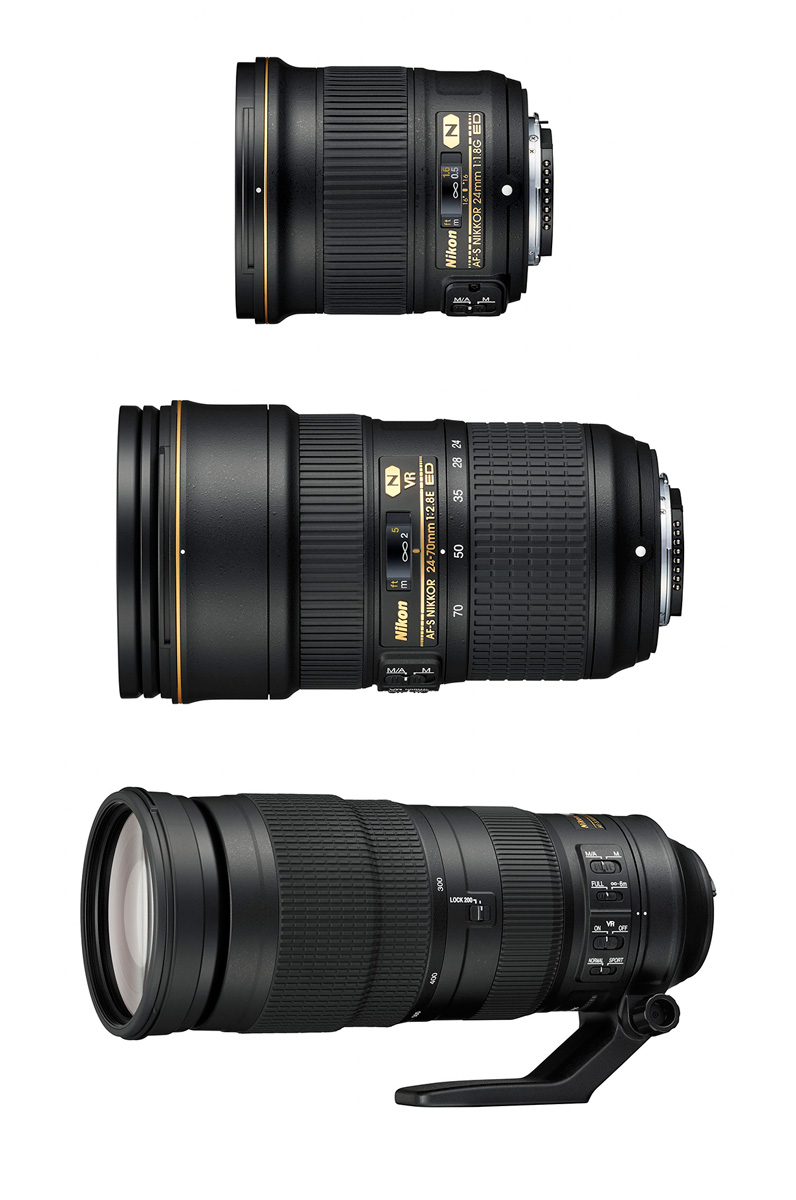Pushing the limits: Three new Nikkor lenses
Review of new Nikkor lenses for Nikon cameras: AF-S Nikkor 24mm f/1.8G ED, AF-S Nikkor 24-70mm f/2.8E ED VR, AF-S Nikkor 200-500mm f/5.6E ED VR
8.31.2016
Back in my days as a newspaper photographer (film), the lens I most often carried on my Nikon was a manual-focus Nikkor 24mm f/2. It was compact, light, and delivered excellent image quality when stopped down to f/5.6. It was usable at maximum aperture.
The new AF-S Nikkor 24mm f/1.8G ED is a far better lens in every way, albeit larger and heavier than my old one. Even so, it was the new AF-S Nikkor 24-70mm f/2.8E ED VR lens that I chose to use for the majority of my shooting as I reviewed the Nikon D5 for the October 2016 issue of Professional Photographer. You'd expect that given the almost $1,650 price differential over the new 24mm lens ($749 vs. $2,400). But for what passes these days as a budget lens, the 24mm f/1.8 delivered very good image quality with excellent build quality, and I used it with pleasure for my night sky photos of the Milky Way from Haleakala volcano.

The latest 24-70mm Nikkor adds image stabilization, a larger filter size of 82mm, electromagnetic aperture control, and a new optical formula of 20 elements in 16 groups, as well as a $700 price premium to the previous version, which remains available. Image quality is nothing short of outstanding for a zoom lens in this range, but I couldn’t detect any huge improvements in image quality over the non-VR lens. With a 2.5-pound lens on a 3-pound camera I appreciated the image stabilization, which, for a change, did seem to give a four-stop gain in handheld shutter speeds. But you would really need the VR capability to justify trading the older lens for this one.

The AF-S Nikkor 200-500mm f/5.6E ED VR is Nikon’s first zoom to reach 500mm and the first supertelephoto Nikkor zoom to include an electromagnetic aperture control (the “E” in the lens designation) for more accurate exposure when shooting at high frame rates. The lens features two image stabilization modes: Normal, which allowed me to capture handheld images at 1/60 second with the lens at 500mm, and Sport, which is designed for conditions where fast-paced action requires panning and lateral movement. Internal focusing keeps the length constant at 10.5 inches and the weight down to 4.6 lbs. Despite these features it lacks the build quality of a top-level Nikkor supertelephoto as well as the price tag. The outer barrel is made of metal with a high-grade plastic shell, while the inner barrel is made of plastic. These help to keep the cost down to about $1,400 versus the $7,000 for Nikon’s 200-400mm f4 lens. Image quality is excellent with little vignetting even at maximum aperture. Chromatic aberration, often a problem with longer lenses, is well under control. Attached to a D5 this would be the perfect lens for birders.

Nikon continues to push the limits with its professional DSLR and Nikkor lens introductions. With most working professional photographers locked into a digital system, it's welcome news that Nikon continues to push the boundaries of what's possible in image capture hardware.
Stan Sholik is a commercial/advertising photographer in Santa Ana, California, specializing in still life and macro photography.


 View Gallery
View Gallery
